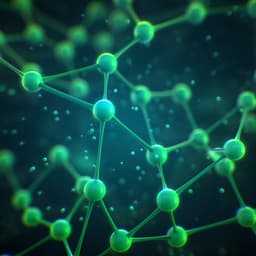
Engineering and Technology
Deep learning model to predict fracture mechanisms of graphene
A. J. Lew, C. Yu, et al.
Discover how researchers Andrew J. Lew, Chi-Hua Yu, Yu-Chuan Hsu, and Markus J. Buehler harness machine learning to predict graphene's intricate fracture behavior. This groundbreaking study delves into crack instabilities and challenges the limitations of traditional methods, promising a new era in nanomaterial design!
Playback language: English
Related Publications
Explore these studies to deepen your understanding of the subject.







